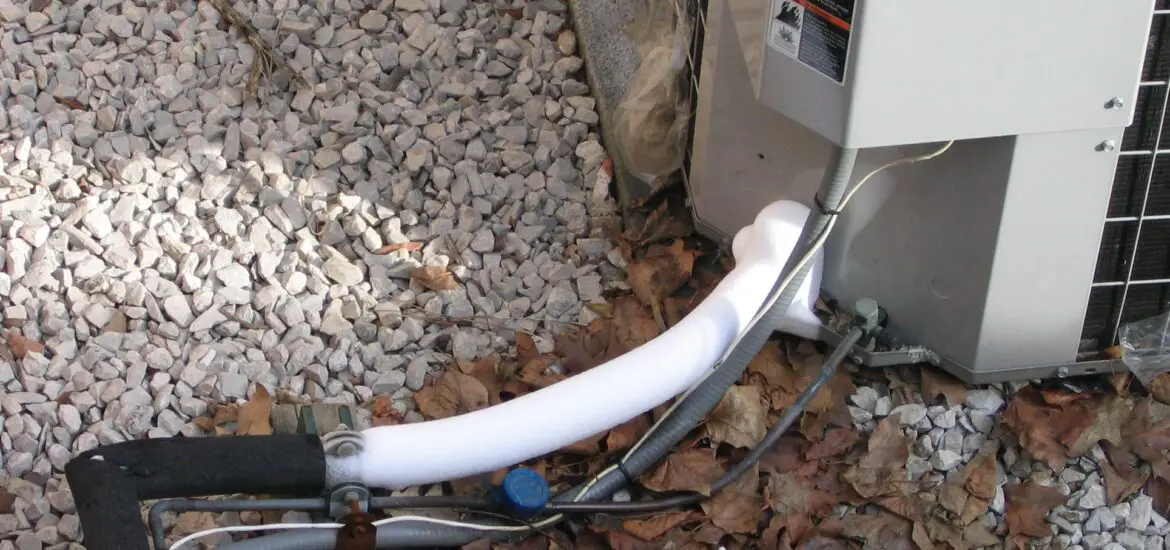How do freon leaks happen? Well, this guide delves into the mechanical and physical processes that lead to Freon leaks.

Table of Contents
How Do Freon Leaks Happen?
The process of Freon leaking in HVAC systems is complex, involving a series of mechanical failures and physical changes. Let’s examine each step in detail:
Pressure and Temperature Fluctuations
Freon, as the primary refrigerant in most HVAC systems, operates under varying pressures and temperatures. These fluctuations are a normal part of the cooling and heating cycles.
However, over time, this constant change in state from liquid to gas and back, combined with pressure changes, can strain the system. This stress primarily affects the refrigerant lines, valves, and connectors, which can expand, contract, and eventually wear down.
The continual expansion and contraction can lead to cracks or weakening of these components, making them prone to leaks.
Material Fatigue
Material fatigue refers to the gradual weakening of materials due to repeated stress. In the context of HVAC systems, this is seen in the components that contain Freon.
The refrigerant lines, made of copper or aluminum, are particularly susceptible. Over time, the ongoing stress from pressure and temperature changes can cause these metal lines to develop tiny cracks or holes.
Similarly, seals and gaskets in the system, made from rubber or other flexible materials, can degrade and lose their elasticity, leading to gaps where Freon can escape.
Corrosion
Corrosion is a chemical process that deteriorates metals as a result of reactions with their environment. In an HVAC system, this can be caused by moisture, oxygen, and other chemicals present in the air.
For instance, copper lines can corrode when exposed to moisture, leading to thinning of the metal and eventual leaks. The rate of corrosion can be influenced by environmental factors like humidity, pollution, and proximity to corrosive substances.
Corroded areas in the refrigerant lines or coils become weak points that can easily develop into Freon leaks.
Physical Damage
Physical damage to HVAC systems can occur from external sources like renovations, accidental impacts, or pest infestations. For example, during home renovations, the refrigerant lines can be accidentally punctured or damaged.
Similarly, pests such as rodents can chew through parts of the HVAC system, creating direct pathways for Freon to escape. This type of damage often leads to immediate and noticeable leaks, requiring prompt repair.
Joint and Connection Failures
Joints and connections in refrigerant lines are critical but vulnerable points in an HVAC system. These areas, where different components of the system connect, can weaken over time due to a variety of factors, including improper installation, vibration, and material degradation.
As the seals or fittings in these joints and connections degrade or loosen, they become prime spots for Freon leaks. Regular maintenance is key to identifying and addressing issues with joints and connections before they lead to significant leaks.
Leak Formation
Leak formation is the culmination of the aforementioned factors. Once a component within the HVAC system becomes weakened or damaged, it forms a pathway for the Freon to escape.
These leaks can start small, often going unnoticed at first. However, if left unaddressed, they can widen and lead to a substantial loss of refrigerant.
The location and size of the leak play a significant role in how quickly it impacts the system’s efficiency and operation.
System Imbalance
A Freon leak leads to an imbalance in the HVAC system’s refrigeration cycle. This refrigerant is essential for absorbing and releasing heat, and its loss disrupts this cycle.
Initially, this may manifest as reduced efficiency – the system has to work harder to cool or heat, leading to increased energy consumption. If the leak persists, it can result in complete system failure, as the system can no longer effectively regulate temperature.
In addition, an imbalanced system can cause other components, like compressors, to fail due to the increased strain.